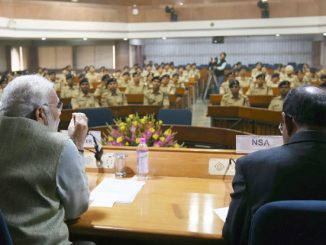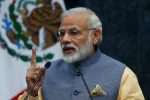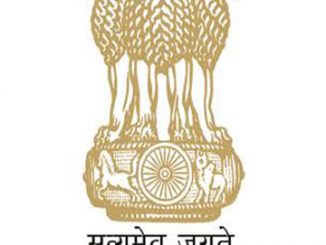
In three years the Narendra Modi government has secured India’s position as the spring board of world economic growth. India is growing at 7.9 per cent when the world is growing at 3.1 per cent. The stock market is booming. India is for the first time surplus in power and coal production. Energy scenario is promising. India is successfully developing alternative sources of energy at a time when oil prices are down. Inflation is low. Lending rates are coming down. Loan off take is looking up. The country is witnessing the highest ever public investment in infrastructure. And all the economic fundamentals are promising a sustained economic growth that will push India as one of the most vibrant large economies of the world.
Modi government has really retrieved the India story which had fallen into a morass of policy paralysis, crony capitalism and corruption. Shri Modi has proved that good economics is good politics. He has made development the central theme of Indian political debate. This in fact is the greatest achievement of the past three years of the present government.
It is a far cry from the politics of the past when emotional issues, caste, communal polarization and identity used to dominate national discourse. Every poll of late is being fought on development plank. Public response has forced parties to take moralistic stance and address the concerns of the aspirational India. This is how the Prime Minister has reshaped polity. Sab ke saath sab ka vikas. Development for all with everybody being a stake holder.
For this the Modi government moved in the direction of Team India where every state became the bulwark of economic growth, competing with each other for investment promotion and creating atmosphere for ease of doing business. For this, the Centre substantially increased allocation for states on the lines of the 14 Finance Commission recommendations. In the Constitutional scheme of things, all major aspects of growth, bijali, paani, sarak, land and education are in the state or concurrent list. The redefining of the role of planning through NITI Ayog was a step to promote state initiative for healthy growth match between states. As a result states like Madhya Pradesh, Chhattisgarh, Gujarat and Bihar posted double digit growth trajectory in agriculture, pushing up the national farm growth.
Ensuring social security was another aspect of this story. For the first time since independence more number of people – 35 crore- became bank account holders. All these people automatically became eligible for life cover. More number of people got free cooking gas connection by encouraging rationalization of subsidy, making over 10 million families give up subsidy and saving as much as Rs. 55000 crore through direct cash transfer to poor families. Pradhan Mantri awas yojna and Mudra yojna has given wings to a million dreams providing shelter and job opportunities to families who had no hope of owning a home or starting a trade.
Rural electrification has for the first time in seven decades lit up 19000 villages. While retaining and strengthening all the good and viable schemes of the previous government like MGNREGA , Aadhar and introduction of new welfare initiatives like Pradhanmantri jeevan beema and Suraksha Yojna and Swastya Mission, regulation of drug and stent prices have revolutionized rural life style. The measures have given hope and assurance to the people in the low income bracket. Demonetization was a major step towards redistribution of wealth to create a more egalitarian social order. It unearthed lakhs of crores of black money and eliminated equally huge chunk of fake currency.
What Modi government achieved in three years is a total attitudinal change in the approach to growth. The government has made phenomenal savings in public funds be it through elimination of oil subsidy, rationalization of service charges, better tax collection, ensuring windfall earning through coal blocs and spectrum bids which the previous government had claimed as zero value assets. By this the Prime Minister has not only kept his word that he will guard national treasury as a sentinel but also put an end to cronyism in public life. Prudent economic planning was at the root of the idea of a cashless society and digital transaction. Policy driven, credible, targeted and people-centric have been the approach so far. The regime of entitlements, privileges and mai baap ka sarkar is a thing of the past. In fact the real democracy in day-to-day aspects of governance is a whiff of fresh air Shri Narendra Modi has brought into politics and governance.
India has notched up points in index of ease of doing business in these years. Few months ago in a cover story titled India Online The Economist said, “Every second, three more Indians are experiencing internet for the first time. By 2030 more than one billion of them will be online. …India boasts the world’s fastest growing large economy and the planet’s biggest population of millennials — and you can see why the likes of Facebook, Uber and Google are falling over themselves to establish footholds…” Clearly India under NDA is a revenue multiplier, investment destination. Of late the job market too has started looking up.
Successful start-ups are making India the manufacturing hub of the world. Democracy, credible institutional frame work, graft free and transparent systems have helped India to take a leap over China on investor confidence. Shri Modi has turned a new leaf for India which inspired the 30 million plus NRIs to trust the India growth story and bring huge remittances home. In three years Shri Modi has turned despair into hope, and as World Bank noted India still is the sole silver line in a sea of darkness.
About:Dr R Balashankar is a senior journalist, regularly writes on economic issues.Views expressed are author’s personal.







Leave a Reply
You must be logged in to post a comment.